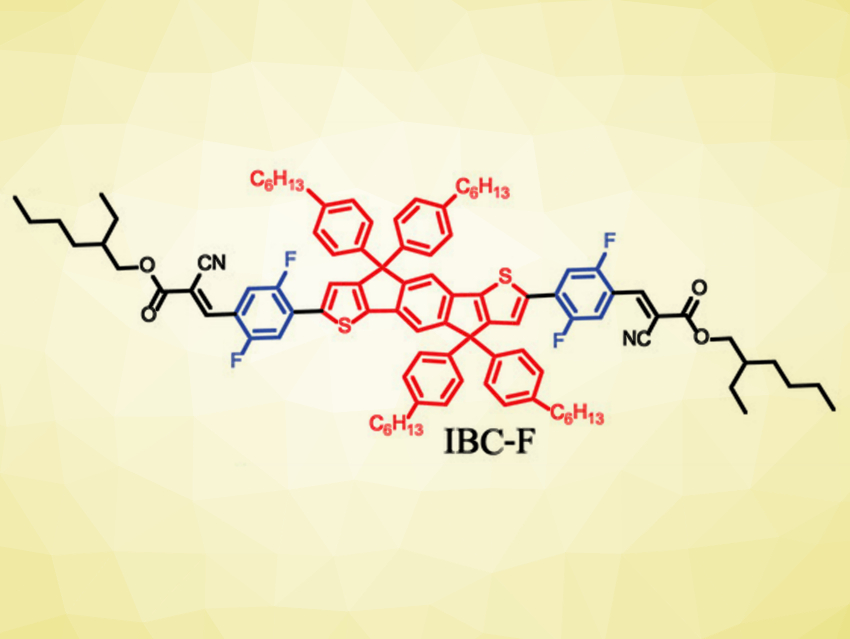Polymer solar cells (PSCs) are more lightweight than their silicon counterparts. They are flexible, semi-transparent, and easy to make. However, their low efficiency and poor stability under constant sunlight and heat are still a problem. The active layer of a PSC separates the irradiation-produced “excitons” into a positive charge and an electron. They are then extracted to a positive and negative electrode, providing electricity. A binary active layer in a polymer solar cell consists of two types of molecules or polymers mixed together. They act as “donors” and “acceptors”. A third compound can be introduced into this blend to manipulate various properties of the active layer.
Chaohua Cui, Soochow University, Suzhou, China, and colleagues have developed a ternary active layer for PSCs. The researchers have introduced the new molecule, IBC-F (pictured above), into a host blend of the polymer PBDB-T, a common donor material for organic solar cells, and the molecule IE4F-S, an organic semiconductor acceptor (both pictured below). IBC-F consists of donor (D) and acceptor (A) units, which are connected via π-bridges (A-π-D-π-A). It shares its donor unit, a central indacenodithiophene (IDT), with the host molecule IE4F-S.

The team found that these new PSCs have an improved performance. A binary reference device without IBC-F showed a power conversion efficiency (PCE) of 13.70 %. By adding 20 % IBC-F into the blend, PCE was increased to 15.06 %. According to the researchers, the IBC-F molecule delivers energy to the PBDB-T polymer as a sensitizer via a Förster resonance energy transfer (FRET) mechanism. IBC-F also improves the morphology of the active layer. Therefore, charge dissociation and extraction are easier. In addition, IBC-F improves the stability of the PSC under constant irradiation and heat treatment.
- Ternary Polymer Solar Cells Facilitating Improved Efficiency and Stability,
Yingying Dong, Yan Zou, Jianyu Yuan, Hang Yang, Yue Wu, Chaohua Cui, Yongfang Li,
Adv. Mater. 2019.
https://doi.org/10.1002/adma.201904601



